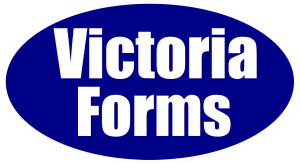Enterprise Forms Server
Enterprise Forms Server is our powerful eForms management system, enabling an organisation to host, control, process, and archive any number of blank and completed eForms, both online and offline, across the enterprise and externally to partners and customers.
The Enterprise Forms Server system has a wealth of key features, including:
Blank forms are presented in a user friendly, categorised way with mouse-over descriptions and thumbnail images. Access to different categories of forms may be individually controlled by users with administrative permissions.
Public users do not have to create an account to fill in forms – prior registration is a significant deterrent to using many online services. With Enterprise Forms Server, public users can go straight to forms, and may fill, save and submit forms without hindrance; eForms are simply linked directly to any location within an organisation’s website.

Access to the eForm System used internally by organisations is limited to registered users only for security. Users will provide a unique username and password when they first log into the system.
Appointed system administrators can control staff access levels via a user management screen where they may add users, change details – such as allowing access to specific eForm categories, etc. Staff contact details may also be recorded here for use in letter templates.

When a registered user makes a change to an eForm, their name, the date and time of the change, and details of the change itself, will be stored. A summary of an eForm history may be viewed. For further investigation, versions of the eForm throughout its lifespan may be redisplayed from stored snapshots.

A large number of eForm features are available to customise the behaviour of each form. Administrators access configuration screens to set these parameters, without any coding being required.
Enable or disable features on a form by form basis:
In order to handle large numbers of eForms that may be produced when eForms are used internally, eForms are stored within a database. eForms may be sorted and listed on screen by date received and by applicant name. eForms may be filtered according to the date of submission, the eForm name, the eForm category or the user category. Individual cases may be found with a name and address or a reference number search..
As a case is processed it will automatically move through different categories that can be defined to fit the way that the benefit department works. A system administrator may track progress of eForms as they pass through the department, with the ability to move forms between categories, allowing a basic workflow system to be established. Forms may also be deleted (and restored).
Authorised users control the export to document and back-office systems.

Where Victoria Forms supplies a set of template forms, these can be quickly customised to suit the organisation hosting them.
Details of the organisation name, web-address, telephone numbers, address, office opening hours, or any other custom information as required, are entered on a single set-up page within the system. This information will then appear on the template forms throughout the form library.
If any of these details change in the future, all forms in the library can be updated with one change of the library branding form saving time and ensuring information is current at all times.

Export Options for Enterprise Forms Server
Do more with your form data. With our powerful integration options, rekeying can become a thing of the past.

